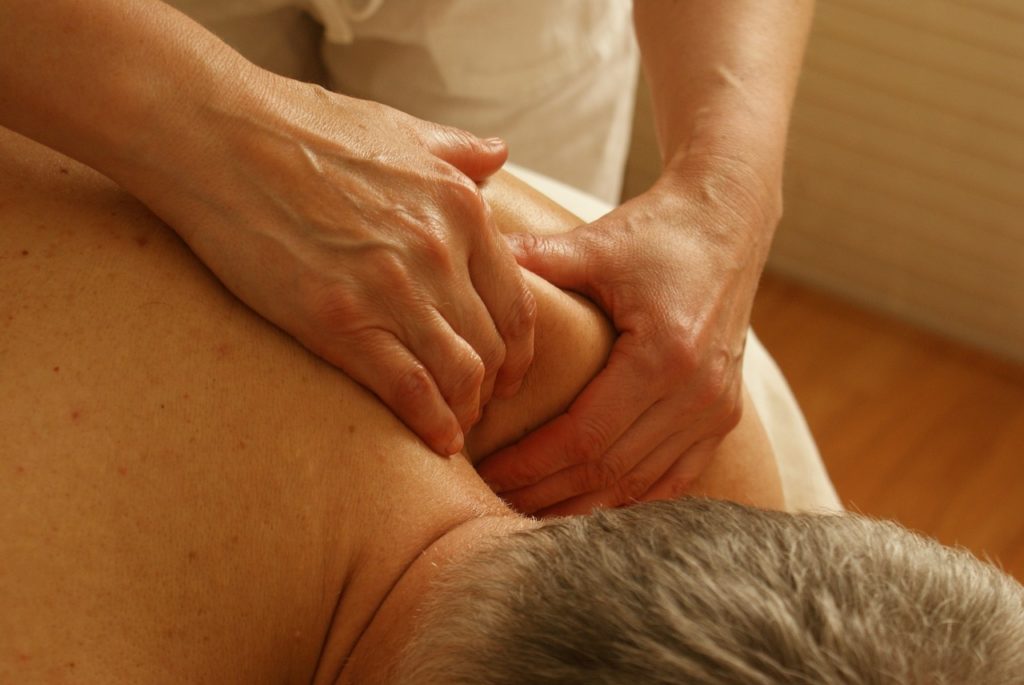
When you think of symptoms of idiopathic pulmonary fibrosis, shortness of breath, coughing, and fatigue may come to mind. But some people with pulmonary fibrosis also experience chronic or frequent pain. Although pain is not considered one of the main symptoms of IPF, it can develop.
Although there is limited scientific research on pain with IPF, it is possible it can occur for a few reasons. For example, it’s not uncommon for someone with pulmonary fibrosis to become deconditioned, which may contribute to muscle stiffness.
Deconditioning, or the reduced functional capacity of the musculoskeletal system, can develop due to disuse. As IPF progresses more and more of the lung tissue is effected and becomes scarred. The increased scarring leads to increased shortness of breath or breathlessness with activity. Patients naturally decrease their activity level and over time become deconditioned. This can lead to muscle wasting, weakness, stiffness and pain or discomfort with activity.
Some people with pulmonary fibrosis report having aching joints and muscles. One theory as to why this occurs is as the condition progresses, the lungs become more damaged. The damage decreases the lung’s ability to carry oxygen to the tissues of the body leading to low oxygen levels known as hypoxia, which might explain aching joints and muscles.
Coughing can also develop in people with idiopathic pulmonary fibrosis. Intense episodes of coughing may lead to soreness in the shoulders, chest, and upper back.
Pain may also occur due to co-existing medical conditions. For instance, according to the National Heart, Lung and Blood Institute, IPF is also linked to gastro-esophageal reflux (GER) which can cause discomfort or burning in the chest. It’s also possible for someone with pulmonary fibrosis to have additional medical problems that leads to pain, such as arthritis.
Consequences of Pain with IPF
As if respiratory symptoms and fatigue are not enough to deal with, living with ongoing pain can be difficult. Chronic pain effects a person biologically, psychologically and socially. People with chronic pain are at risk for illness and injury, depression, anxiety and isolation resulting in a lower quality of life. For instance, if you have ongoing pain, it can interfere with attending social gatherings or participating in a pulmonary rehabilitation program.
Ways to Deal with Pain
Reducing discomfort may improve your level of functioning, exercise ability, and overall quality of life. There are several things you can do to cope with ongoing pain including the following:
Talk with your doctor: There is no need to suffer in silence when it comes to persistent pain. Talk with your doctor about symptoms, frequency, and severity of the pain. Effective treatment options may be available. Working closely with your doctor to manage symptoms is also essential. For example, decreasing coughing may reduce pain associated with continued hacking.
Stay active: Exercise can be challenging if you have shortness and breath and pain. But light exercise may help keep your muscles strong and decrease stiffness. Consider activities, such as walking, yoga, and pulmonary rehabilitation exercise classes.
Think about complementary therapies: Complementary and alternative medicine has not been shown to be effective for pulmonary fibrosis and should not be used as an alternative to conventional medicine. But complementary therapies, such as massage and acupressure, may be helpful in decreasing pain in some people.
Consider oxygen: Some people with idiopathic pulmonary fibrosis may benefit from the use of supplemental oxygen. Using oxygen may allow you to be more active, which may help prevent deconditioning.
Content written by Dr. Jeremy Feldman, an expert in Idiopathic Pulmonary Fibrosis, with contributions by MaryAnn DePietro, B.S. CRT, a licensed respiratory therapist.